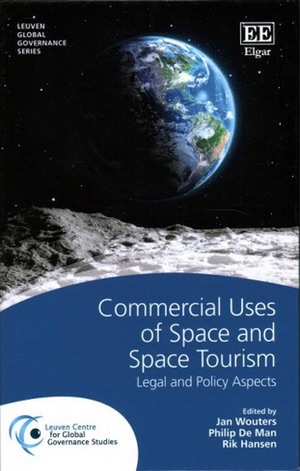Review: Commercial Uses of Space and Space Tourismby Jeff Foust
|
| One author recommends a temporary moratorium on LEO satellite constellations “at least until much-needed technological capabilities and more detailed environmental impact assessments coalesce” to address debris concerns. |
That is not necessarily the explicit or intended theme of the book, but it’s one that emerges from many of its chapters. One chapter discussing the difficulties of the concept of the “launching state” in today’s environment, including how to determine liability. “The system may have to evolve,” the author concludes, while “maintaining a strong, efficient and fair mechanism of liability.” Another chapter ponders who is considered an “astronaut” for purposes of the Outer Space Treaty and a separate “return and rescue” agreement. The author argues that, under the interpretation of the “ordinary meaning” of the term at the time the treaty was enacted, it would include anyone in a spacecraft, including both professionals and space tourists.
Some want to slow down commercial initiatives because of concerns about the ability of existing treaties and agreements to deal with them. Ward Munters, in a lengthy discussion about low Earth orbit satellite constellations, argues that treaties don’t provide protection for the “space environment” from defunct satellites and other debris from such systems. Munters recommends a temporary moratorium on such systems “at least until much-needed technological capabilities and more detailed environmental impact assessments coalesce” to address those concerns. (That, for now, seems unlikely based on the lack of opposition at the national level to satellite constellations under development by companies in the United States and elsewhere.)
As the title suggests, one area of emphasis in this book involves legal issues associated with space tourism, a field that sparked national legislative action, particularly in the United States, in the early 2000s but has yet to take off as an industry. Chapters in the book deal with US and UK regulatory activities that include commercial human spaceflight. Another chapter by an official with the European Aviation Safety Agency (EASA) makes the argument that suborbital spaceplanes should be regulated as aircraft and not launch vehicles—the opposite approach to the US. (It also leaves open the possibility of different regulatory regimes for suborbital vehicles that have wings and take off and land on runways, versus those that offer a similar suborbital spaceflight experience but launch and land vertically.) For now, it’s a moot point since EASA is not pursuing that regulatory approach at the moment, and there’s little urgency to do so given the slow development of such suborbital vehicles.
Commercial Uses of Space and Space Tourism is a book primarily for those involved in legal and regulatory issues involving spaceflight, given the depth of its subject matter as well as its price. For those readers, this book will cover some familiar topics, but discuss them, and the challenges they pose for future commercial space activities, in great detail.
